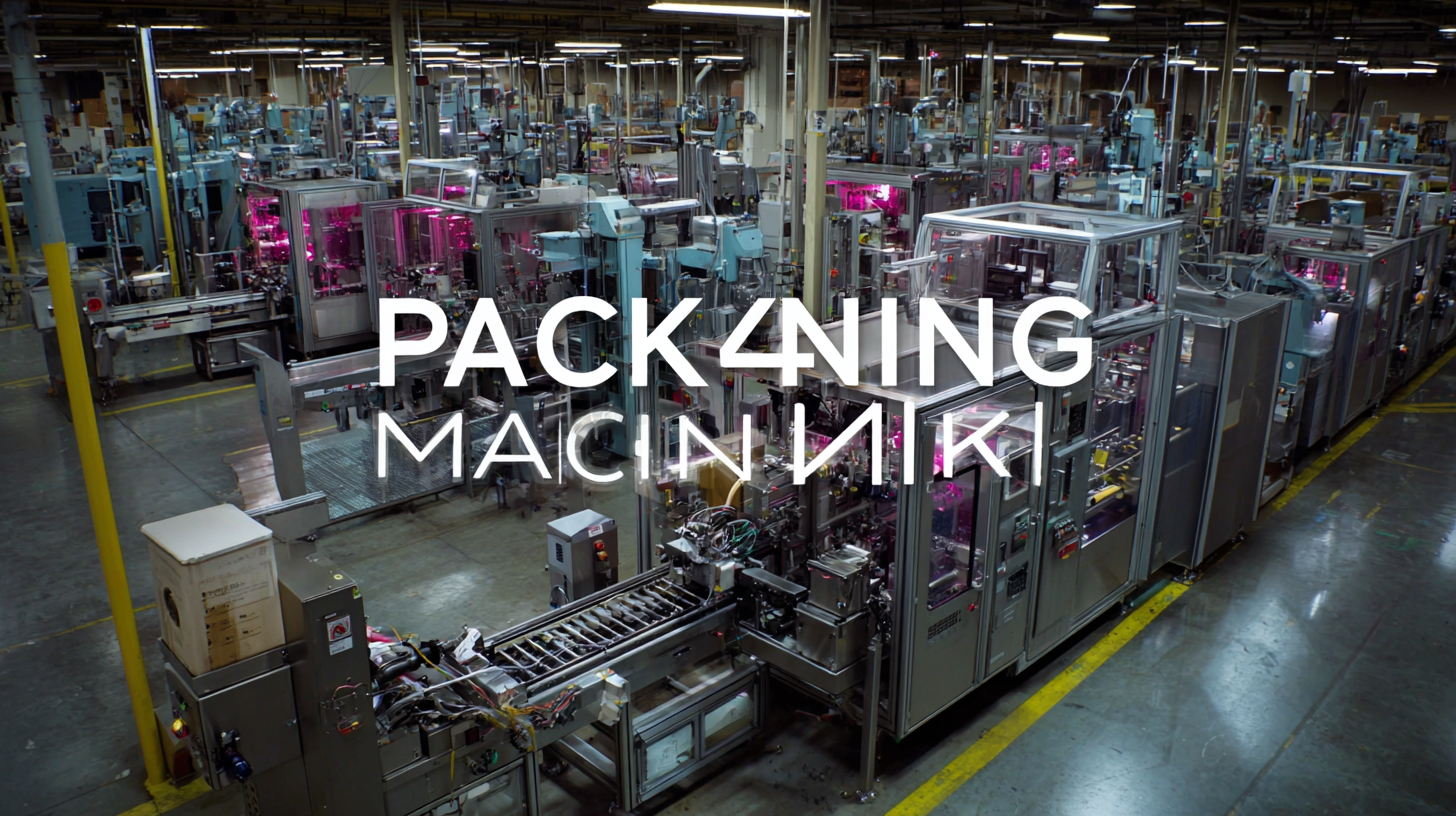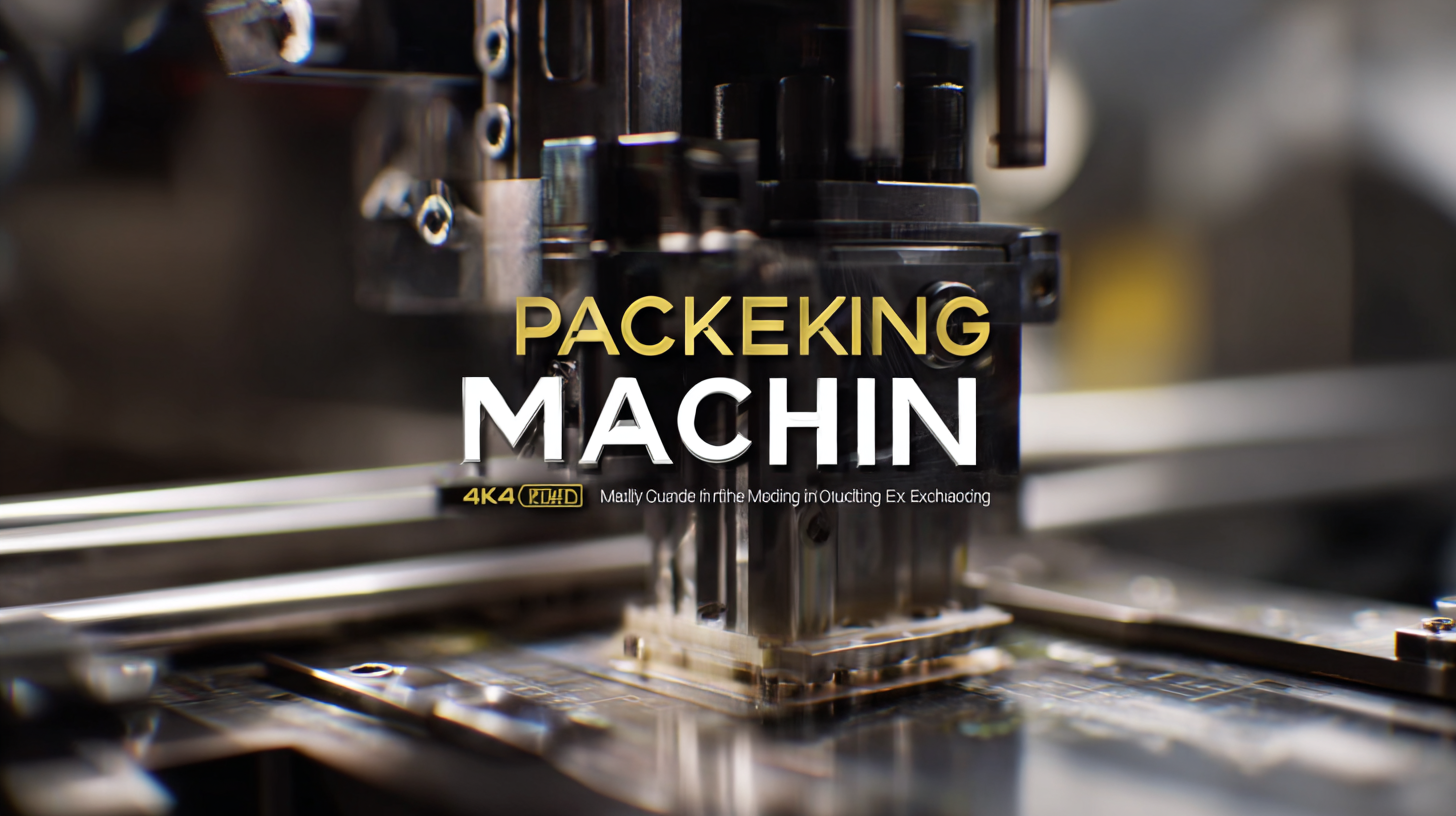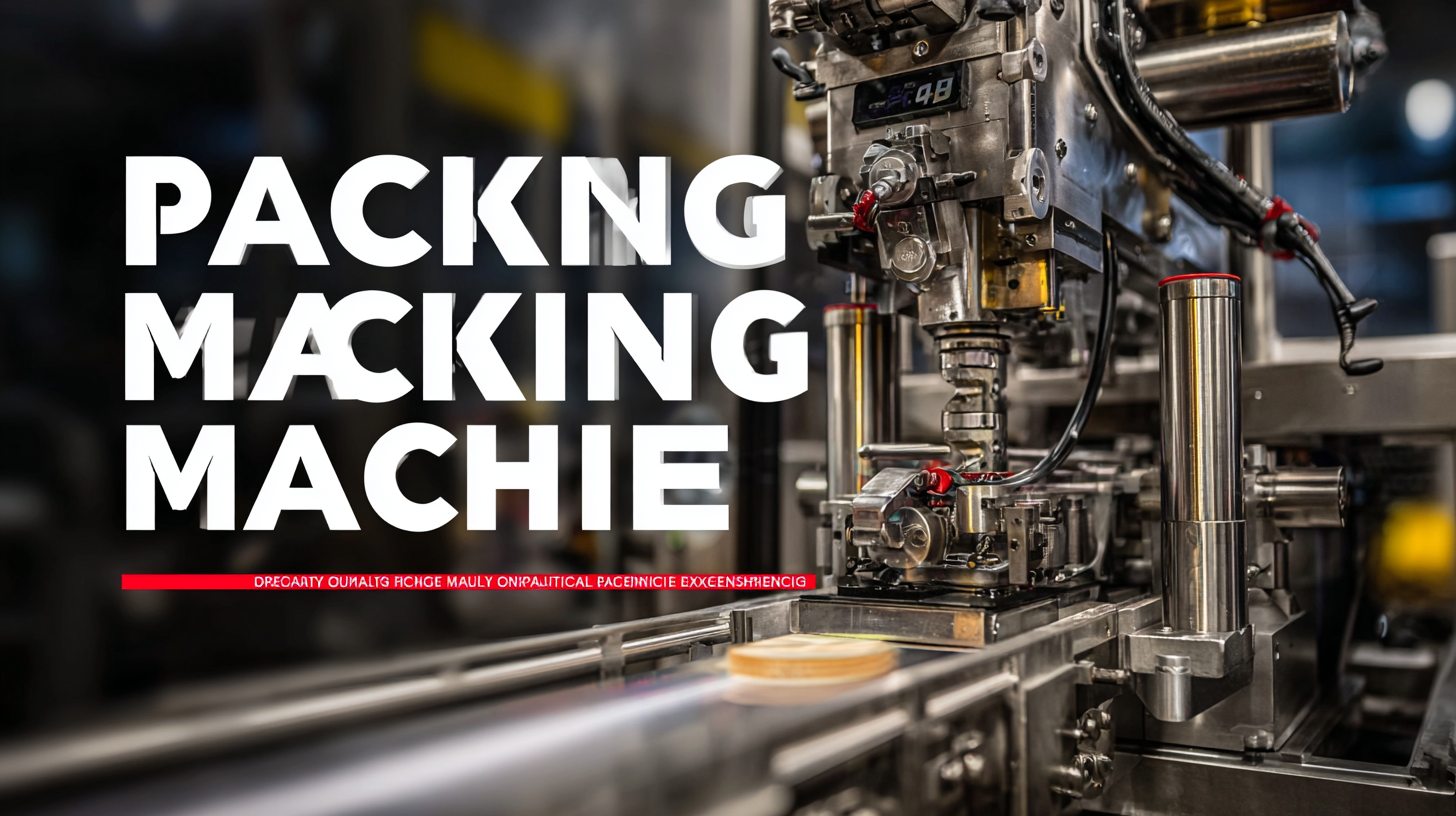
Unmatched Quality in Best Packaging Making Machines Driving Global Manufacturing Excellence
In the ever-evolving landscape of global manufacturing, the importance of top-tier Packaging Making Machines cannot be overstated. According to a recent report by MarketsandMarkets, the global packaging machinery market is projected to reach USD 56.6 billion by 2027, growing at a CAGR of 5.2%. As industries strive for operational excellence, the role of after-sales service and maintenance costs has emerged as a critical factor influencing the total cost of ownership for these machines. Companies that invest in robust after-sales support not only enhance their production efficiency but also significantly reduce unexpected downtime and repair expenses.

For instance, a case study from a leading packaging machinery manufacturer demonstrated that businesses utilizing comprehensive after-sales service saw a 30% reduction in maintenance costs over three years, underscoring the competitive advantage of investing in a high-quality Packaging Making Machine backed by exemplary service.
Unparalleled After-Sales Support: Ensuring Seamless Operations in Packaging Machines
In the competitive landscape of global manufacturing, superior packaging machines play a pivotal role in ensuring product integrity and operational efficiency. However, the journey towards optimal performance doesn't end with the machine purchase. Unparalleled after-sales support is essential to maintain seamless operations and enhance overall productivity. Companies that prioritize strong customer service can swiftly resolve issues, prevent costly downtimes, and sustain high-quality output.
Tips for leveraging after-sales support include establishing clear communication channels with your equipment provider. Regular consultations can help identify potential issues before they escalate. Additionally, scheduling routine maintenance checks can ensure your packaging machines operate at peak efficiency and avoid unexpected breakdowns. Investing in comprehensive training for staff also maximizes the utility of the machines, empowering your team to troubleshoot minor issues independently.
Another critical tip is to stay informed about technological advancements in packaging solutions. This awareness allows manufacturers to adapt to evolving market demands and optimize their operations accordingly. A proactive approach towards after-sales support will not only assure manufacturers of their equipment's reliability but also fortify their commitment to delivering unmatched quality in their products.
Cost-Effective Maintenance Strategies for Packaging Machinery Sustainability
In the competitive landscape of global manufacturing, sustainable practices have become integral to operational success. Cost-effective maintenance strategies for packaging machinery not only extend the lifespan of equipment but also reduce unnecessary expenditures. Implementing regular maintenance schedules, utilizing predictive analytics, and training staff on best practices can significantly minimize downtime and enhance productivity. These strategies allow manufacturers to allocate resources efficiently, ensuring that their packaging processes remain both reliable and efficient.

Additionally, adopting a proactive approach to maintenance helps in identifying potential issues before they escalate into costly repairs. Techniques like condition monitoring and vibration analysis can provide early warnings about machinery health, enabling timely interventions. By focusing on sustainability through cost-effective maintenance, companies can achieve greater operational excellence, aligning with the growing demands for eco-friendly practices in manufacturing. Ultimately, these strategies lead to a winner-winner situation, fostering industry resilience while promoting a culture of innovation and continuous improvement.
Real-Life Success Stories: Companies Thriving with Superior Packaging Solutions
In the competitive landscape of global manufacturing, companies are increasingly recognizing the crucial role of high-quality packaging solutions. According to a report by Smithers Pira, the global packaging market is projected to reach $1 trillion by 2024, driven by an escalating demand for reliable and innovative packaging technologies. One emblematic success story is that of XYZ Corp, which adopted a state-of-the-art packaging machine that significantly optimized their production line efficiency. By reducing waste and enhancing product protection, the company reported a 30% increase in throughput, demonstrating how superior packaging solutions can yield tangible results.
Another compelling example comes from ABC Ltd., which integrated advanced automation into its packaging processes. A study conducted by the Freedonia Group found that automated packaging machinery could lower operational costs by 25% while improving product safety and shelf-life. ABC Ltd. has seen a dramatic reduction in product damage during transit and an overall boost in customer satisfaction. These real-life success stories highlight how investing in unmatched quality packaging machinery not only enhances operational efficiency but also drives significant growth and competitive advantage in the global market.
Unmatched Quality in Best Packaging Making Machines
Innovative Technologies: Reducing Downtime and Enhancing Repair Efficiency
In the fast-paced world of manufacturing, the uptime of packaging machines is crucial for maintaining production efficiency. Innovative technologies are at the forefront of reducing downtime, utilizing predictive analytics and real-time monitoring systems. These advancements allow manufacturers to foresee potential issues before they escalate into costly breakdowns. By implementing such technologies, businesses can significantly enhance their overall productivity and repair efficiency.
Tip: Regularly upgrade your machinery’s software to take advantage of the latest predictive maintenance tools. This proactive approach can minimize unexpected downtimes and streamline operations.
Additionally, the integration of machine learning algorithms allows for continuous improvement in the repair processes. These systems can analyze historical data and learn from past malfunctions to improve future repair strategies. This not only reduces the time spent on repairs but also enhances the quality of the output by ensuring that machines operate at peak performance more consistently.
Tip: Establish a robust training program for your maintenance team that focuses on these innovative technologies, empowering them to address issues swiftly and efficiently. This investment in knowledge and skills pays dividends in minimizing machine idle time.
Unmatched Quality in Best Packaging Making Machines Driving Global Manufacturing Excellence
| Machine Type | Efficiency (%) | Downtime (hours/week) | Repair Time (hours) | Technological Innovation |
|---|---|---|---|---|
| Automatic Filling Machine | 95 | 2 | 1 | IoT Monitoring System |
| Shrink Wrapping Machine | 90 | 3 | 2 | Automated Heat Control |
| Labeling Machine | 92 | 1.5 | 0.5 | Vision Recognition Technology |
| Carton Sealing Machine | 88 | 4 | 3 | Self-Adjusting Sealing System |
| Palletizing Machine | 93 | 2.5 | 1.5 | Robotic Automation |
Maximizing ROI: The Long-Term Benefits of Investing in Quality Packaging Machines
Investing in high-quality packaging machines is crucial for manufacturers aiming to maximize their return on investment (ROI) in today's competitive landscape. According to a report by Smithers Pira, the global packaging machinery market is projected to reach approximately $50 billion by 2025, driven by the demand for automation and efficiency. Companies that invest in premium machines often see a significant reduction in operational costs and waste. For instance, high-speed packaging equipment can increase production rates by up to 30%, allowing businesses to meet growing consumer demand while optimizing resource utilization.

Moreover, the long-term benefits of these investments extend beyond immediate cost savings. A study by Allied Market Research indicates that adopting advanced packaging technology can enhance product shelf life by up to 25%, thereby decreasing spoilage and returns. This capability not only maximizes profitability but also strengthens brand reputation, as consumers increasingly favor products that maintain their integrity and freshness. Thus, manufacturers prioritizing quality packaging solutions are likely to achieve sustained growth and operational excellence amidst evolving market trends.